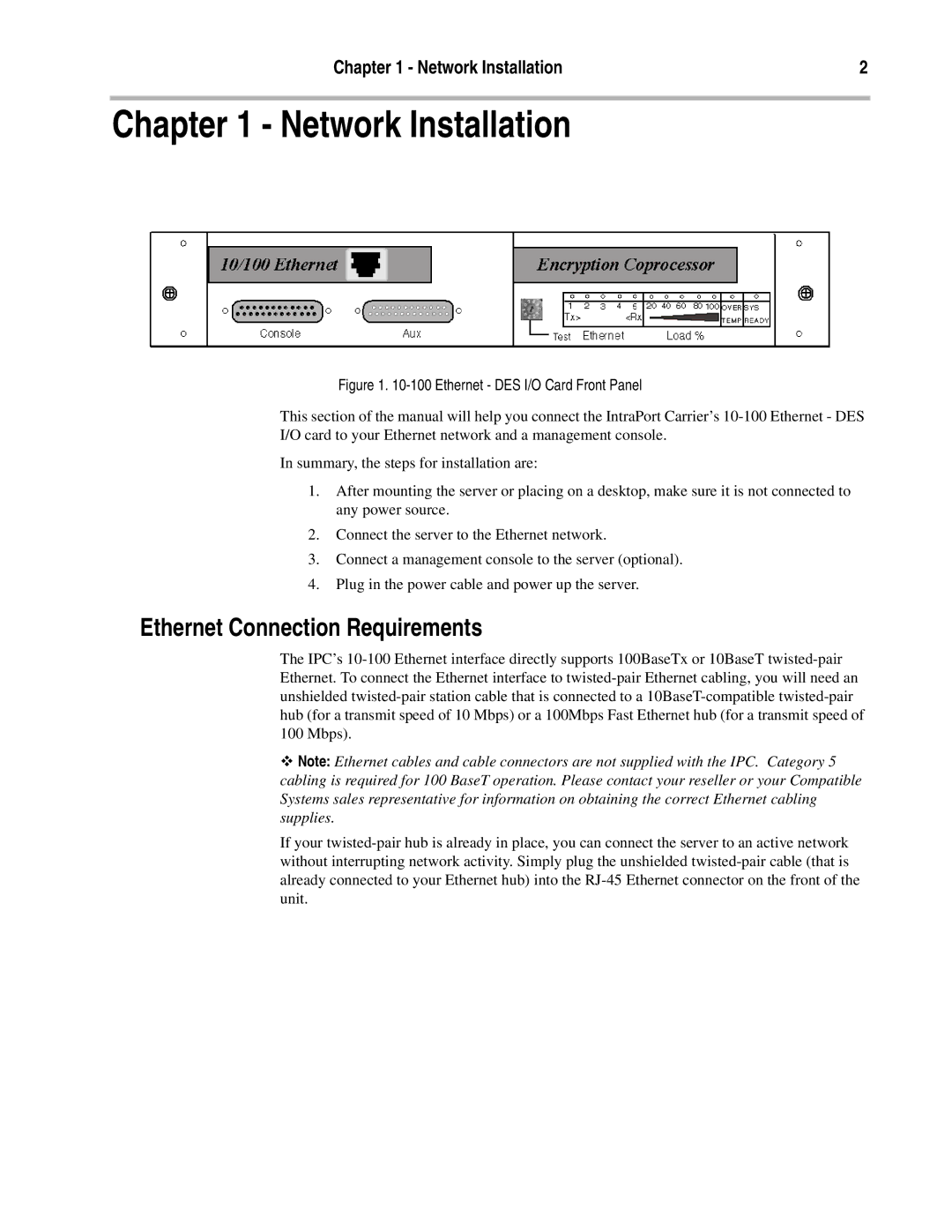10/100 specifications
Compatible Systems 10/100 is a technology designed for networking devices that allows for efficient data transmission at speeds of 10 megabits per second (Mbps) and 100 megabits per second. This dual capability enables seamless communication in various networking environments, accommodating both older devices that operate at 10 Mbps and newer devices that can utilize the faster 100 Mbps rate. The compatibility aspect is essential for mixed media and legacy systems, ensuring that organizations can transition to faster networks without obsolete older equipment.One of the primary features of Compatible Systems 10/100 is its auto-negotiation capability. This technology automatically detects the highest possible speed supported by both the device and the network, allowing for optimal performance without manual configuration. This feature simplifies the setup process for users and reduces the potential for connectivity issues, making it ideal for businesses with diverse hardware.
Another critical characteristic of Compatible Systems 10/100 is its support for both Ethernet and Fast Ethernet standards. Ethernet operates at 10 Mbps, while Fast Ethernet, introduced in the mid-1990s, supports speeds of up to 100 Mbps. This flexibility means that organizations can implement a mixed environment while ensuring that they can leverage the benefits of higher-speed connections where necessary.
In terms of physical layer technology, Compatible Systems 10/100 typically employs twisted-pair cabling, following the Category 5 (Cat 5) standard or higher. This cabling supports higher frequencies and reduced crosstalk, enabling reliable data transmission across various distances. Ethernet over twisted pair is widely used due to its cost-effectiveness and ease of installation.
Additionally, the technology incorporates full-duplex communication capabilities, allowing for data transmission and reception simultaneously, effectively doubling the potential throughput without interference. This feature is particularly advantageous in busy network environments, ensuring that data packets can flow freely without congestion.
Overall, Compatible Systems 10/100 serves as a robust solution for organizations looking to maintain compatibility with legacy systems while incorporating the advancements of modern networking technologies. Its combination of auto-negotiation, support for multiple standards, and reliance on reliable cabling infrastructure allows businesses to scale their networks efficiently and effectively. As they move towards higher speeds and advanced technologies, the foundation provided by Compatible Systems 10/100 remains indispensable.

